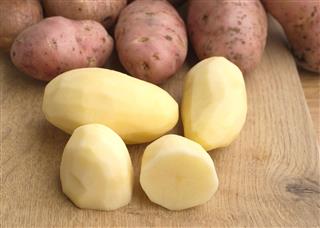
Peripheral vascular disease is a disease of the blood vessels located outside the heart and brain. It is a major cause of amputation in the United States. The following article provides comprehensive information on this grave illness.
Peripheral vascular disease (PVD), also known as peripheral artery disease (PAD), is a disorder in which the blood circulation gets completely or partially blocked and does not reach the arms, legs, stomach, or kidneys. PVD occurs when plaque builds up in the nerves and veins that carry blood to all parts of the body. Plaque is a composite of fat, fibrous tissue, cholesterol, calcium, and other substances in the blood. When plaque deposits harden, they constrict the flow of blood passing through the arteries. A form of ultrasound called doppler ultrasound can detect and measure blood flow. It is basically used to measure the blood pressure behind the knees and at the ankles.
There are mainly two types of PADs or circulation disorders, namely: functional and organic. Functional PVDs are caused by emotional stress, smoking, cold temperatures, or working with vibrating machinery. It usually causes a short-term pain that occurs in the form of spasms that come and go. Organic PVDs, on the other hand, are caused by blood clots, inflammation, atherosclerosis (fatty buildups), infection, or tissue damage, and it tends to change the structure of the blood vessels.
Symptoms
The symptoms of PAD generally depend on the affected artery and extent of blockage. Some of the commonly observed indicants are listed below:
- Intermittent claudication (temporary muscle pain or cramp that comes and goes)
- Extreme pain in the thighs, calves, and leg muscles.
- Slow-healing wounds and ulcers with gangrene in the tissues.
- Weakness, tingling, and cramps in the muscles.
- Change in the color (turning blue) and temperature (becoming cold) of the affected limb.
- Loss of hair on the legs and thickening of toenails.
Risk Factors
PAD is more common in men than women, and mostly occurs in people over the age of 50. Mentioned below are the risk factors that make people susceptible to acquiring this disease:
- Obesity
- Smoking
- Diabetes
- Physical inactivity
- History of high blood pressure (hypertension)
- History of any atherosclerosis symptoms
- Chronic renal failure
- Low levels of high-density lipoprotein (HDL) cholesterol
- High levels of low-density lipoprotein (LDL) cholesterol and triglycerides
Treatment
Treatment options include a combination of medicines, surgery, and lifestyle changes that assist in curing or alleviating the disease.
Medicines
Their administration helps in the following ways:
- Helps to ease the swelling and pain that occurs while performing any physical activity.
- Clearing or thinning of the blood clots to ensure proper flow of blood through the arteries.
- Controlling low or high blood cholesterol levels and high blood pressure.
Surgery
Surgical procedures do not cure PAD but help in restoring the flow or circulation of blood to different body organs.
Bypass Grafting
In this procedure, a blood vessel from another body part or a tube (man-made) is used to make a graft. This graft bypasses the blocked area of the artery, allowing the blood to flow around the blockage. Bypass grafting is recommended for completely or partially blocked arteries.
Angioplasty
This procedure is recommended for restoring the flow of blood through a blocked artery. A catheter with a balloon is inserted into a narrowed or blocked artery and is inflated. The inflated balloon pushes the plaque outward against the wall of the artery. This helps in widening the artery and restoring the blood flow. Some doctors place a stent (a small mesh tube) in the artery while performing angioplasty. A stent helps to keep the artery open after the surgery is completed.
Lifestyle Changes
Medicinal and surgical treatment can benefit immensely only when combined with a few lifestyle changes. Mentioned below are a few of them:
Quit Smoking
Smoking increases the risk of acquiring as well as aggravating peripheral vascular and coronary artery diseases.
Lowering Cholesterol
A low-cholesterol diet helps to reduce and even reverse the plaque buildup in the arteries.
Lower Blood Sugar
Diabetic people are more prone to acquiring this disease.
Blood Pressure Control
Blood pressure, both low or high, increases the chances of developing PVD.
Healthy Diet
A healthy diet comprising fruits, vegetables, and low-fat dairy products helps in keeping the body weight under check.
Physical Activity
A supervised exercise program helps in relieving the symptoms of PAD to a large extent.
Timely medical intervention helps in controlling gangrene, a disastrous outcome of PAD, which results in amputations. Like is the case with any disease, prevention is definitely better than cure.
Disclaimer: This HealthHearty article is for informative purposes only and should not be used as a replacement for expert medical advice.









